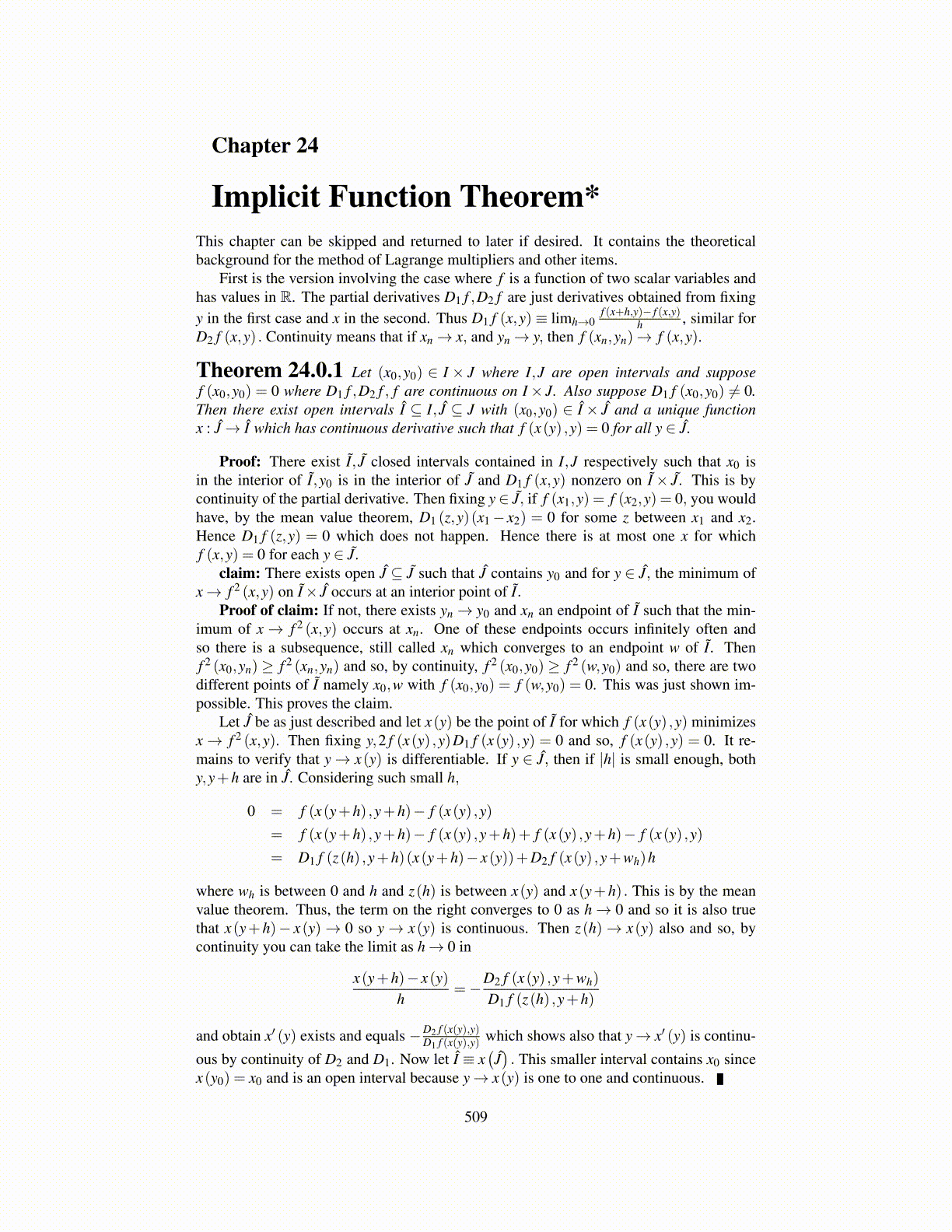
509
Proof: This follows from a computation.
|Mx| =
∑i
∣∣∣∣∣∑jMi jx j
∣∣∣∣∣21/2
≤
∑i
(∑
j
∣∣Mi jx j∣∣)21/2
≤ K ∑i
(∑
j
∣∣x j∣∣2)1/2
= Km |x|
I will use this observation whenever convenient in the following proof.
Theorem 24.0.5 (implicit function theorem) Suppose U is an open set in Rn ×Rm.Let f : U → Rn be in C1 (U) and suppose
f (x0,y0) = 0, D1f (x0,y0)−1 exists. (24.1)
Then there exist positive constants, δ ,η , such that for every y ∈ B(y0,η) there exists aunique x(y) ∈ B(x0,δ ) such that
f (x(y) ,y) = 0. (24.2)
Furthermore, the mapping, y → x(y) is in C1 (B(y0,η)).
Proof: Let
f (x,y) =(
f1 (x,y) f2 (x,y) · · · fn (x,y))T
.
Define for(x1, · · · ,xn
)∈ B(x0,δ )
nand y ∈ B(y0,η) the following matrix.
J(x1, · · · ,xn,y
)≡
f1,x1
(x1,y
)· · · f1,xn
(x1,y
)...
...fn,x1 (x
n,y) · · · fn,xn (xn,y)
. (*)
Then by the assumption of continuity of all the partial derivatives, there exists r > 0 andδ 0,η0 > 0 such that if δ ≤ δ 0 and η ≤η0, it follows that for all
(x1, · · · ,xn
)∈B(x0,δ )
n ≡B(x0,δ )×B(x0,δ )×·· ·×B(x0,δ ), and y ∈ B(y0,η),∣∣det
(J(x1, · · · ,xn,y
))∣∣> r > 0. (24.3)
and B(x0,δ 0)× B(y0,η0)⊆U . Therefore, from the formula for the inverse of a matrix andcontinuity of all entries of the various matrices, there exists a constant K such that all entriesof J
(x1, · · · ,xn,y
),J(x1, · · · ,xn,y
)−1, and D2f (x,y) have absolute value smaller than
K on the convex set B(x0,δ )n×B(y0,η) whenever δ ,η are sufficiently small. It is always
tacitly assumed that these radii are this small.Next it is shown that for a given y ∈ B(y0,η) ,η ≤ η0, there is at most one x ∈
B(x0,δ 0) such that f (x,y) = 0.Pick y ∈ B(y0,η) and suppose there exist x,z ∈ B(x0,δ ) such that
f (x,y) = f (z,y) = 0